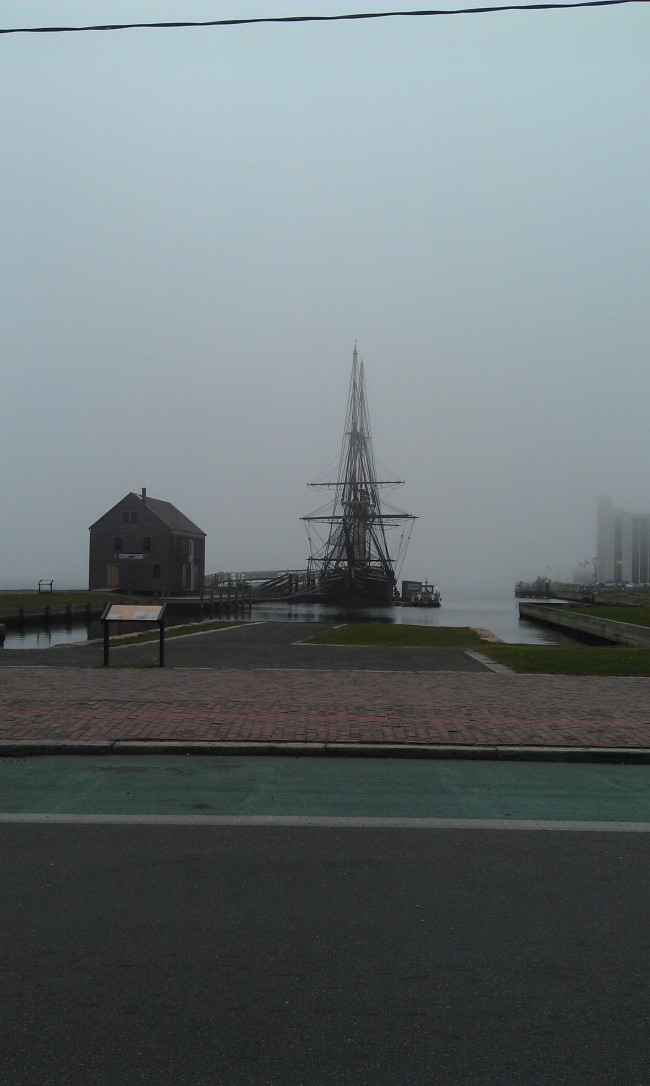The fog was immense this morning. In fact, it blotted out the shoreline of Marblehead across the bay. From years of living in the area, I could imagine the landscape. But, what about the times when I am not so familiar with the terrain?
You Don’t Know What You Don’t Know
People like to have some orientation or, in this instance, landmarks. I cannot imagine what someone new to the area might think about the unseen shore. The person doesn’t even know that it exists. Perhaps, they might not even get a little disoriented by the absence of the shore because in their life, they have no earlier mental image.
In fact, they might think it’s just a foggy day. No anxiety. No concern because they don’t know that beyond the mist and fog is the other shore.
Deciphering Our Position
Without any preconceived ideals or mental pictures, whatever presented is merely an experience. Neither good nor bad. We see what is in our life and file away the details. We might refer to that image again for comparison, validation or change. Our level of comfort isn’t disrupted.
But what if we sailed away from shore far enough to lose sight of land. Surrounded by sea, we look to the sun for boat position and maybe experience a little unease, especially if we are unfamiliar with sailing without landmarks. Which direction is away from land and which is parallel?
Because we have nothing to compare our location, we are at a loss how to navigate our journey. Perhaps, we are drifting with a current and our estimations are inaccurate. There are so many variables to consider.
Creating Your Personal Map
The best anyone can do is create a map for their self. You take in all your past experiences, good and bad, and synthesize some direction based on known data. Is there wind and if so, is it coming off shore or not. Maybe you can’t tell. What does the air smell like? Like sea or city? Maybe you try sailing for a specific number of minutes in one direction and see what develops. More sea or a spit of land appearing.
All these suggestions are based on my personal experience. I am sure a reader is thinking just dial someone you know on your cell phone or access the cell’s gps for location coördinates.
You see ways to create a plan based on data you do know.
Reuse Information for Deepening Your Experience
Now that you are back in port surrounded by landmarks, you may gain a sense of competence in your experience out to sea. Knowing what you did and finding safety back at shore, maybe you think that the sailing into the unknown is okay. Maybe a little thrilling in a good way. Worth another try.
Maybe you venture farther out to sea and have confidence that you can navigate back with ease because you have done this several times already. The unknown has become familiar. There is comfort in your knowledge and experience.
Application of Knowledge and Experience
In life, we create our methods of learning and applying the information we have learned. We are good to experiment with new things but we bring our tool kit of known experiences to balance our voyage into the unknown. We keep trying to make sense of new data.
Like the first time the fog blocked our ability to see what we knew was there, the pursuit of the unknown feels different. We don’t know what to expect but we keep moving forward. We take a chance. We apply our knowledge to reduce our risk. We keep our eyes and ears open for signals and signs.
But all along the way, whether we see the other shore or not, we have faith in our abilities based on our experience. We can reuse that which we know in situations of complete newness to us. It’s how we build our expertise and knowledge base.
It’s how we grow as individuals.
Where in your life do you need to lose sight of land? Be able to take a risk with experience? Ship out for a different shore?

